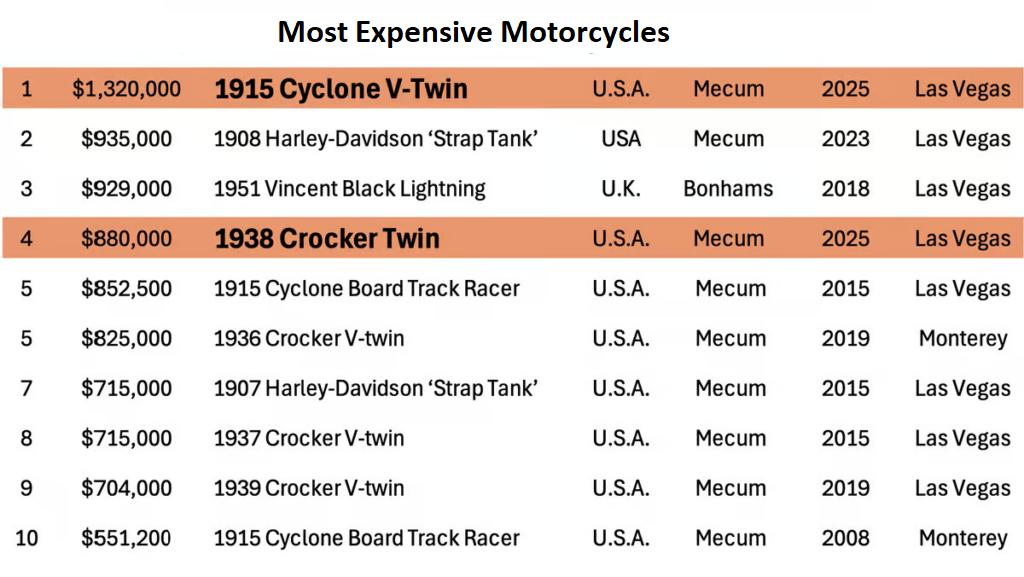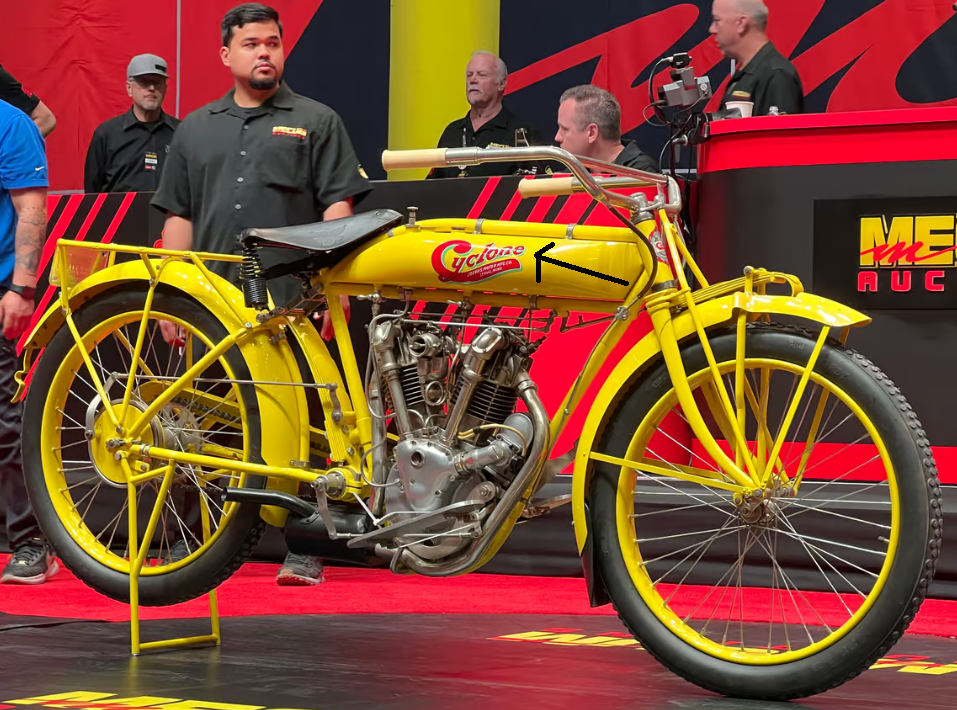Introduction: The First Million-Dollar Motorcycle Sells at Auction
The motorcycle world has witnessed a groundbreaking moment: a motorcycle has officially crossed the million-dollar threshold at an auction. This historic sale not only marks a milestone in the world of collectible motorcycles but also changes the way we view the value of two-wheeled legends. In this article, we’ll dive deep into the story behind this extraordinary motorcycle, what makes it so special, and why it was worth such an astounding amount of money.
The History Behind the First Million-Dollar Motorcycle
The Iconic Motorcycle: 1915 Harley-Davidson X8-11
The motorcycle that made history was a 1915 Harley-Davidson X8-11, a rare gem that had been hidden away for decades. It’s not just the age of the bike that made it special, but also its incredibly well-preserved condition and authenticity, which made it highly desirable to collectors. The motorcycle was part of an exclusive private collection before being sold at auction, making it even more sought after.
Why Was This Motorcycle Worth So Much?
Exclusivity and Rarity
Motorcycles like the Harley-Davidson X8-11 are rare, and when a piece of history is in near-perfect condition, collectors are willing to pay top dollar. There were very few of these motorcycles produced, and most have been lost to time, with only a small handful remaining in mint condition. This made it a prime candidate for the record books.
Historical Significance
The 1915 Harley-Davidson X8-11 holds significant historical value. Harley-Davidson has been one of the most iconic American motorcycle brands, and this particular model represents a key period in the brand’s development. It embodies the craftsmanship and ingenuity of the early 20th century, making it highly prized among collectors and historians alike.
Restoration and Originality
The X8-11 underwent an extensive restoration, maintaining as much of the original parts as possible. The authenticity of the restoration added to its allure, making it a one-of-a-kind motorcycle. These factors combined to create a bidding war that drove the final price into the seven-figure range.
What Makes This Motorcycle Unique?
Design and Features
The 1915 Harley-Davidson X8-11 features classic design elements that showcase the evolution of Harley-Davidson motorcycles. It has a V-twin engine and a transmission system that was revolutionary for its time. The chopper-style handlebars, along with the distinctive exhaust pipes, made this model stand out among its contemporaries.
Legacy in Motorcycling Culture
This model represents more than just a rare find – it symbolizes the legacy of Harley-Davidson and the impact it has had on motorcycle culture over the years. Owning a piece of this history is not just about the monetary value but also about preserving an important part of motorcycling heritage.
How the Auction Played Out
The Bidding War
At the auction, the Harley-Davidson X8-11 was met with intense interest from collectors, dealers, and motorcycle enthusiasts from around the world. Bidders knew they were part of a rare opportunity to own a piece of history. The auction quickly escalated, and within minutes, the bid soared past $500,000, eventually reaching a final sale price of $1.1 million.
Impact on the Motorcycle Market
This sale is expected to have a ripple effect across the motorcycle market. It will likely inspire other owners of rare motorcycles to consider auctioning off their prized collections. Experts predict that this auction will lead to increased interest in vintage motorcycles and may drive up the prices of similar models.
Pros of Investing in Classic Motorcycles
- Potential for High Returns
As demonstrated by the sale of the 1915 Harley-Davidson X8-11, classic motorcycles can be a highly profitable investment. - Cultural and Historical Value
Classic motorcycles like the Harley-Davidson X8-11 are not just investments; they hold cultural and historical significance. - Rarity and Exclusivity
Rare motorcycles with limited production runs or models that have been well-preserved tend to command high prices at auctions.
Cons of Investing in Classic Motorcycles
- High Maintenance Costs
Maintaining a vintage motorcycle can be costly, especially if parts are no longer in production. - Niche Market
The market for classic motorcycles is niche, which means there is limited demand compared to newer models. - Risk of Market Fluctuations
Like any investment, the value of motorcycles can fluctuate. Economic downturns or changes in collector interests can affect prices.
Top 10 Most Expensive Motorcycles Sold at auction

Conclusion: A Historic Sale with a Lasting Legacy
The sale of the 1915 Harley-Davidson X8-11 for over $1 million marks a turning point in the world of collectible motorcycles. It highlights the value of rarity, authenticity, and historical significance in the motorcycle market. Whether you’re a collector, a motorcycle enthusiast, or just someone fascinated by rare collectibles, this auction shows that motorcycles can hold immense value beyond their functionality – they’re pieces of history.
FAQs About the Million-Dollar Motorcycle
1. What made the 1915 Harley-Davidson X8-11 worth so much?
The motorcycle’s rarity, historical significance, and mint condition after restoration made it a highly sought-after collector’s item.
2. How much did the first million-dollar motorcycle sell for?
The 1915 Harley-Davidson X8-11 sold for a record-breaking $1.1 million at an auction.
3. What makes classic motorcycles valuable?
Classic motorcycles become valuable due to factors like rarity, condition, originality, and their place in motorcycle history.
4. Who bought the million-dollar motorcycle?
The buyer of the 1915 Harley-Davidson X8-11 is a private collector who specializes in rare vintage motorcycles.
5. Can I buy a million-dollar motorcycle?
While rare and expensive motorcycles exist, the price often depends on factors like condition, rarity, and historical significance.

